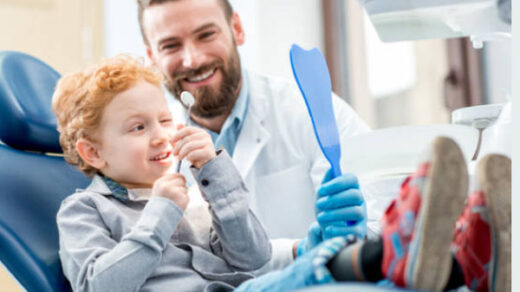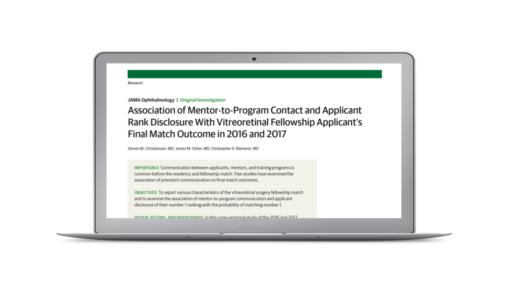Clark Scholars Program
Held every summer at Texas Tech, the Clark Scholars Program allows students to engage in meaningful research with a small group of link-minded students.
Human Oncology and Pathogenesis Program at Memorial Sloan Kettering
One of the best cancer research and treatment facilities in the country is home to a top summer program for high school students. Participants conduct independent research projects and attend training sessions and tours to learn about clinical work in the field. Through HOPP, they will learn laboratory techniques and gain real-world experience.
The program runs for eight weeks. At HOPP’s culmination, students present their research at a poster session. They will also receive a stipend for their participation.
The Jackson Laboratory Summer Student Program
This competitive summer program focuses on genetics and genomics research. Students who are at least 18 and have completed 12th grade at the start of the program work on an independent research project under the mentorship of JAX staff. At the culmination of the program, participants present their findings.
Only 40 students are selected for this 10-week program at Highseas or the University of Saint Joseph. Students receive a $6,000 stipend, and the program covers the cost of transportation, along with room and board.
MIT Minority Introduction to Engineering and Science (MITES)
Rising high school seniors, many of whom come from underrepresented or underserved communities, who are interested in engineering and science careers can explore their interests at the Massachusetts Institute of Technology (MIT). Students complete five courses across math, life sciences, physics, and humanities and participate in admissions counseling sessions, lab tours, and social events.
MIT Women’s Technology Program (WTP)
A program designed for young women the summer between the junior and senior years of high school, WTP allows students to delve into electrical engineering and computer science or mechanical engineering. This program is taught by MIT graduate students and is designed for students with little to no experience in computer science or engineering.
The National Institute of Health High School Summer Internship Program
Through HS-SIP, high school students have the chance to work side by side with leading scientists at the National Institute of Health (NIH) in biomedical research. The majority of students will work at NIH campuses in Bethesda, Baltimore, and Frederick, MD, although there are a limited number of positions in Hamilton, MT; Framingham, MA; Phoenix, AZ; and Detroit, MI. For their work, students earn a stipend.
Research Science Institute (RSI)
Hosted at the prestigious Massachusetts Institute of Technology (MIT), RSI is the first free-of-cost program to combine hands-on research with science-based coursework, blending theory and practice. Each year, 80 students undertake real, independent research projects, working with leading scientists and building their own plans. At the culmination of five weeks, they deliver conference-style reports on their work. This is an extremely competitive and prestigious program and is considered the Rolls Royce of high school STEM programs.
Roswell Park Summer Cancer Research Experience Program
High school juniors who are residents of Western New York can gain scientific research experience through this program. Students focus on one of nine areas: Biostatistics, Cancer biophysics, Cancer cellular/molecular biology, Cancer genetics, Cancer prevention/epidemiology, Health behavior/cancer health disparities, Molecular pharmacology and cancer therapeutics, Tobacco regulatory science, or Tumor immunology.
In the past, students have focused on projects like “Dissecting the Neural-Vascular link in Head and Neck Cancer,” “The Role of Heat Shock Protein in Prostate Cancer Progression,” and “Cigarette Filter Ventilation and its Correlation with Risk and Sensory Perceptions in America’s Leading Cigarette Brands.” Along with conducting a research project, participants will receive classroom instruction on cancer basics and join seminars with professionals in the field.
Simons Summer Research Program
Simons allows motivated students to participate in hands-on research in science, math, or engineering at Stony Brook University. Working with faculty mentors, these Fellows learn laboratory techniques, join real research teams, and gain exposure to laboratory equipment, while discovering what life is like at a research university. They also attend faculty lectures and events.
The program is free to attend for commuters (there is a housing fee for those who live on campus). Participants will receive a $1,000 stipend at the completion of the program.
Stanford Institutes of Medicine Summer Research Program
SIMR, an 8-week summer internship program, gives high school juniors and seniors the opportunity to conduct hands-on research under the mentorship of Stanford University faculty, postdoctoral fellows, students, and researchers.
Participants focus on a medically-oriented project in one of eight areas of research, called institutes: Immunology, Neurobiology, Cancer Biology, Bioengineering, Stem Cell and Regenerative Medicine, Cardiovascular Biology, Bioinformatics, or Genetics and Genomics. They also have the option of participating in the bioengineering bootcamp (no lab component).
For their work, students receive a $500 stipend at minimum. Grant funding is also available to support groups that have been underrepresented in the field. NB: The admissions process favors Bay Area applicants.
The Summer Academy for Math and Science
At Carnegie Mellon University, students from underrepresented communities in STEM can explore fields such as biology, physics, computer programming, and more and even earn college credit. CMU faculty and staff lead a rigorous curriculum, involving traditional classroom instruction, hands-on projects, and engagement activities, all while students develop relationships with like-minded peers from across the country.
The program is divided into two parts. During Part 1, participants engage in skills-building work virtually. In the second part, students move into residence halls at CMU and, over the course of four weeks, attend courses and meetings and present their work at a symposium and the program’s end.
Summer Science Research Program at the Rockefeller University
RNA Virus Discovery and Bioinformatics, Coronavirus Immune Response, Silkworm Biomaterials, Modeling Microbes in Milk and Cheese, and Ant Social Biology are just some of the many research tracks SSRP scholars have engaged in while working in this mentored biomedical research program at the prestigious Rockefeller University.
Open to high school juniors and seniors aged 16+, SSRP gives students the opportunity to conduct research, all while receiving guidance from Rockefeller community mentors. They will also take part in discussions, lab meetings, trainings, and career-related workshops, where they will gain skills and receive advice on navigating the world of science.


